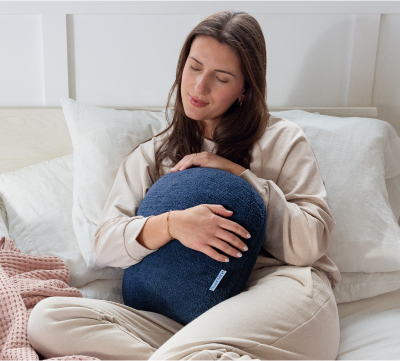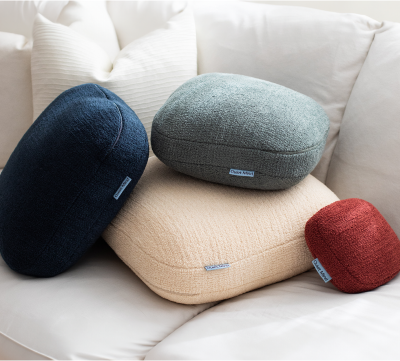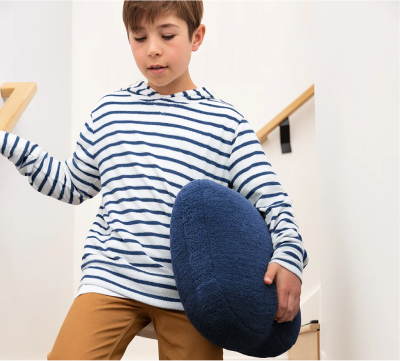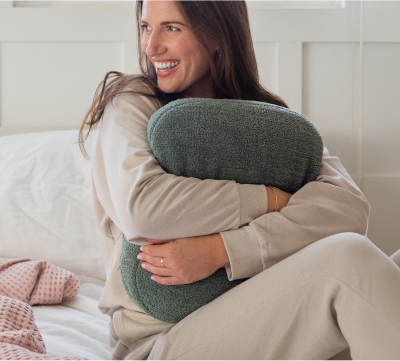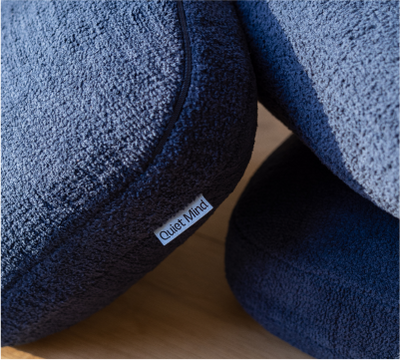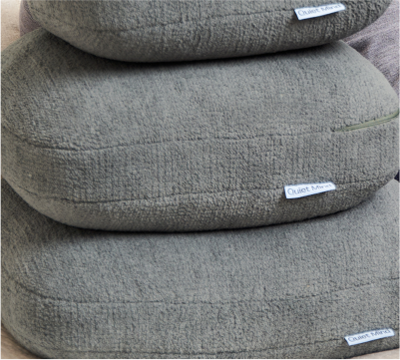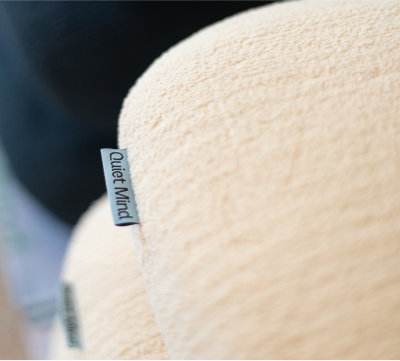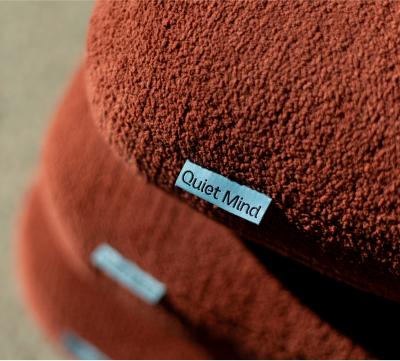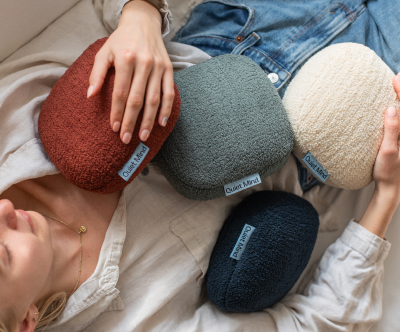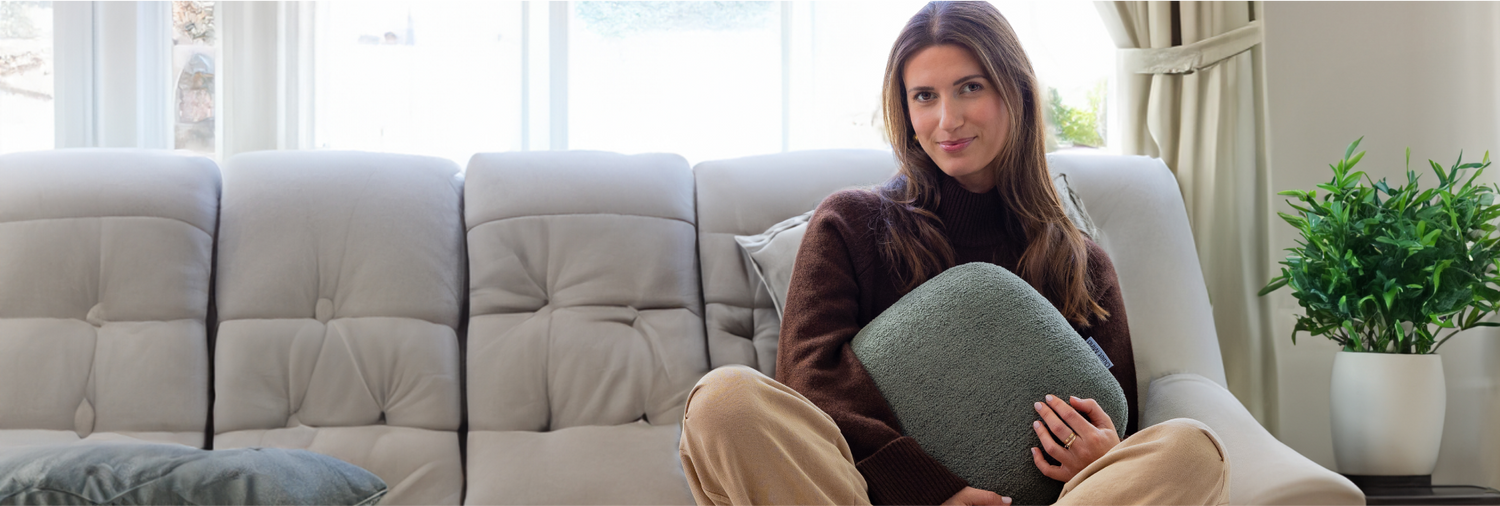There is something quietly reassuring about falling asleep in the arms of someone you trust. Cuddling isn’t just intimacy. It’s a soft signal to the nervous system that you’re safe now. You can let go.
The way you and your partner sleep, your cuddle and sleep position, can influence more than just your night’s comfort. It can improve your mood, support more restful sleep and overall relaxation, which some studies associate with improved recovery.
When two partners share a bed, their chosen position may reflect emotional closeness, physical compatibility, or simply sleep preferences.
Why Cuddling Enhances Sleep Quality
Cuddling is one of the most natural forms of physical touch, and it brings more than momentary warmth. Science shows that when you cuddle with a partner, whether snuggling on the couch or lying inches apart in bed, your body may release oxytocin. This is the hormone linked to love, trust, and calm, which has been associated with reduced stress levels.
At the same time, cortisol levels (the stress hormone) drop, creating a calm, safe internal state. According to the American Academy of Sleep Medicine, sleep health is strongly tied to emotional regulation and reduced stress—both of which are influenced by oxytocin.
That’s why cuddling is one of the few shared bedtime rituals that may also improve your sleep quality, especially when you sync your sleep method and schedule with your partner.
The Best Cuddling Positions for Couples
There’s no universal “right” way to sleep together—but certain couple sleeping positions have proven especially popular and beneficial. Here are some of the most restful cuddling positions and what they might mean for your relationship dynamic.
1. The Spoon (aka The Classic Spooning Position)
This cuddling position is a favorite among many couples. One partner (the “big spoon”) wraps around the other (the “little spoon”) from behind.
It allows for full-body contact and deep warmth while giving a sense of protection and care.
-
Best for: Emotional comfort, full-body warmth
-
Good to know: Placing a pillow between the knees may support hip alignment
-
Cuddle benefit: This posture may support open airways and reduce snoring in some individuals
If you tend to sleep on your side, it may gradually influence your skin and facial contours, something worth keeping in mind as part of your sleep habits.
2. The Honeymoon Embrace
Both partners face one another, arms and legs loosely intertwined. This cuddling position is romantic and intimate.
-
Best for: Emotional bonding, light snuggling
-
Good to know: This position may not be sustainable all night but is comforting at the start of sleep
-
Cuddle benefit: May support feelings of closeness and reduce bedtime stress through shared touch
3. The Leg Hug
In this subtle cuddle position, couples sleep facing apart, but one leg remains gently intertwined with their partner’s. It provides a soft connection without overwhelming warmth.
-
Best for: Warm climates, light sleepers
-
Good to know: Encourages physical closeness without full-body contact
-
Cuddle benefit: Gentle, sustained touch may support relaxation before sleep
4. Back-to-Back With Contact
Partners sleep facing away from each other, with backs, hips, or shoulders touching. This “sleeping back-to-back” position allows independence while maintaining closeness.
-
Best for: Couples with different sleep preferences or who prefer space
-
Good to know: This position may offer a balance between personal comfort and closeness
-
Cuddle benefit: Often reflects emotional trust and comfort in the relationship
5. The Cliffhanger Position
Also known as the “sleep divorce” position, this involves both partners sleeping at the edges of the bed, often an inch apart or with minimal touch. Contrary to assumptions, this position can still represent comfort and respect for each other’s sleep needs.
-
Best for: Different sleep styles, light sleepers, or those sensitive to touch
-
Good to know: Offers uninterrupted rest when one partner tends to move frequently
-
Cuddle benefit: Can represent a healthy sense of autonomy within the relationship
How to Stay Comfortable While Sleeping Together
While cuddling is comforting, discomfort during the night can disrupt sleep for both partners. Here’s how to stay close without sacrificing rest.
Support Your Body
No matter the cuddle position, maintaining spinal alignment is essential for long-term sleep health. Try:
-
A supportive pillow under your head and neck
-
A body pillow for the knees or between the legs
-
Avoiding prolonged weight on arms or shoulders, which may lead to numbness
Stay Cool While Sleeping Close
According to the research, increased core body temperature is linked to fragmented sleep and reduced REM duration. Couples who sleep hot may struggle with overheating. Overheating disrupts REM sleep and can cause night wakings. To avoid this:
-
Use breathable fabrics like cotton, bamboo, or linen
-
Consider separate blankets or a dual-comforter setup
-
Keep the bedroom between 60–68°F (16–20°C)
Address Pressure Points
Certain cuddling positions can lead to sore shoulders, compressed limbs, or stiffness.
-
If you wake with tingling hands or arms, shift to a looser position
-
Use a U-shaped pillow to support the head while reducing neck pressure
-
Alternate sides each night if one partner prefers being the big spoon
Tingling or numbness during cuddling might come from how your body is positioned—especially if it puts pressure on nerves or circulation.
Navigating Common Cuddling Challenges
Even the most affectionate couples encounter sleep challenges when cuddling or sharing a bed. Let’s look at a few—and how to navigate them.
1. Overheating
-
Choose lightweight, sweat-wicking sheets
-
Use a fan or keep a window open
-
Sleep in light, breathable sleepwear or none at all if needed
2. Mismatched Sleep Schedules
When one partner is a night owl and the other is early to bed, try:
-
A shared pre-bedtime cuddle ritual—even if you don’t fall asleep at the same time
-
Using blackout curtains and white noise to support different sleep preferences
-
Sleeping in this position temporarily before separating for deeper rest
3. Different Sleep Needs
Couples who need different mattress firmness, or who have restless sleepers, may benefit from:
-
A split king or dual-zone adjustable bed
-
Earplugs or sleep masks for added independence
-
Separate sleep arrangements when needed—without guilt or assumptions
Emotional & Hormonal Benefits of Sleeping With Your Partner
Sleeping with your partner is more than physical—it’s emotional and hormonal. The oxytocin released through cuddling is linked to:
-
Lowered blood pressure
-
Improved heart rate variability
-
Reduced symptoms of anxiety and depression
-
Increased and stabilized REM sleep
-
Improved overall sleep quality
The health benefits of cuddling aren’t limited to nighttime either. For more on syncing your natural rhythm and prepping your body for sleep, check out this guide to better sleep habits.
What Sleeping Positions Say About Your Relationship
While it’s not an exact science, certain positions and what they mean have been studied by sleep psychologists. For example:
-
The Spoon: Protection, care, and trust
-
Back-to-Back: Independence with emotional closeness
-
Leg Hug: Balanced affection
-
Cliffhanger: Respect for personal space and comfort
These common couple sleeping positions reflect how two partners navigate togetherness and autonomy in their relationship.
How to Find the Right Sleep Position as a Couple
Not every couple’s sleeping arrangement looks the same. A position that helps one couple get better sleep may disrupt another’s rhythm. Here’s how to experiment and find what works:
-
Discuss your sleep needs and preferences openly
-
Try different sleeping positions for couples—track how you feel in the morning
-
Understand that preferences may change due to stress, life stages, or even seasons
The right cuddle position could be something you settle into naturally—or one you adjust throughout the night.
Cuddling Is One of the Simplest Ways to Improve Your Sleep
Whether you’re snuggling close, sleeping apart, or alternating between the two, even a brief moment of cuddling can benefit your sleep quality. It reminds your body and mind that you’re safe—supported. That you’re not alone.
No position is perfect, but finding one that feels right for both of you—physically and emotionally—can lead to deeper rest and a stronger connection. Small shifts in your evening habits can also help you sleep better at night, naturally.
About QuietMind
At Quiet Mind, we believe in the power of simple, natural solutions to ease the mind and body. Our signature weighted pillows are designed to provide comforting pressure, helping to alleviate stress, anxiety, and restlessness.
Whether you're seeking a moment of calm during a hectic day or a more restful night's sleep, Quiet Mind offers tools to support your journey toward tranquility. Discover the soothing embrace of our weighted pillows and find your path to a quieter mind.
FAQs: Sleeping and Cuddling With Your Partner
What is the most comfortable cuddling position for sleep?
The spooning position is often considered most comfortable—it provides warmth and closeness while maintaining proper alignment. But each couple may find different positions better suited to their needs.
Can cuddling improve emotional wellbeing?
Absolutely. Touch reduces stress, promotes calm, and fosters a sense of belonging and safety—factors that influence both emotional and sleep health.
Is it okay to stop cuddling after falling asleep?
Yes. Cuddling doesn’t have to last all night. Many couples snuggle before drifting off, then naturally shift apart to sleep more soundly.
What if we sleep differently?
Try a hybrid sleep arrangement—start the night in a close position, then shift into one that suits your sleep preferences. You don’t need to match perfectly to rest well together.
Can sleeping with a partner help improve sleep quality?
For many, yes. The benefits of sleeping with a partner include reduced stress, increased REM sleep, and improved emotional security.
